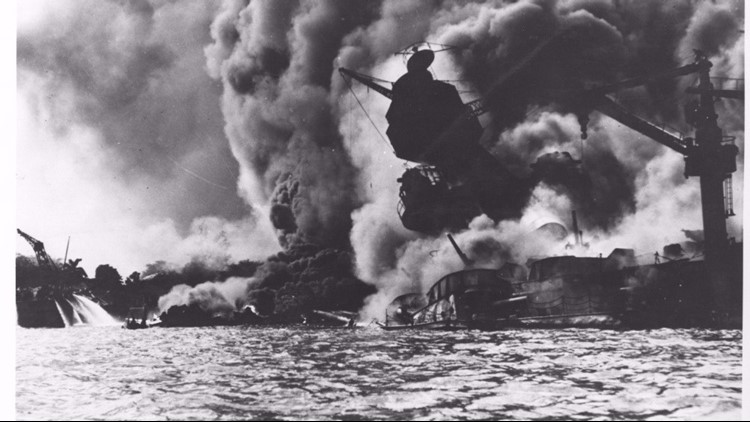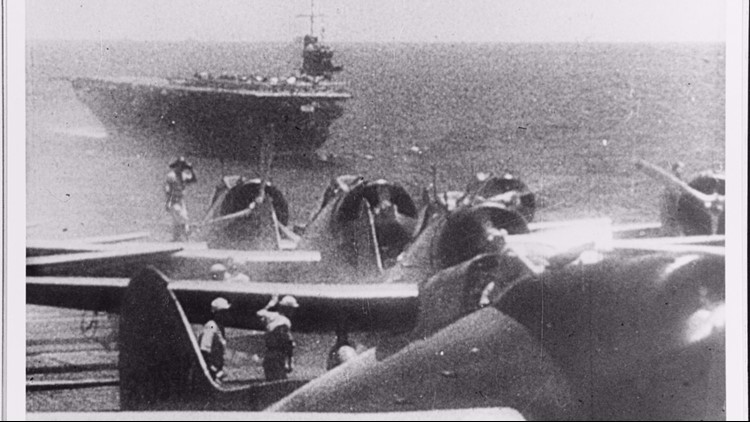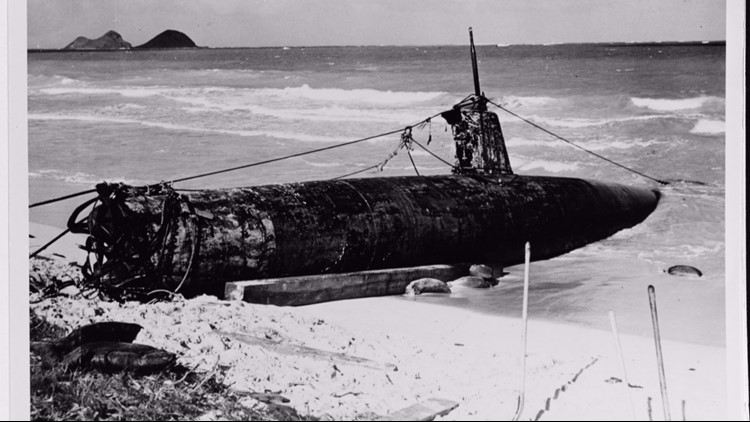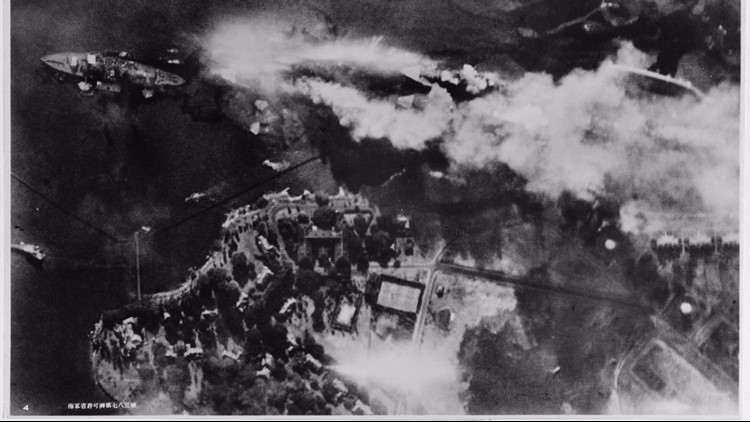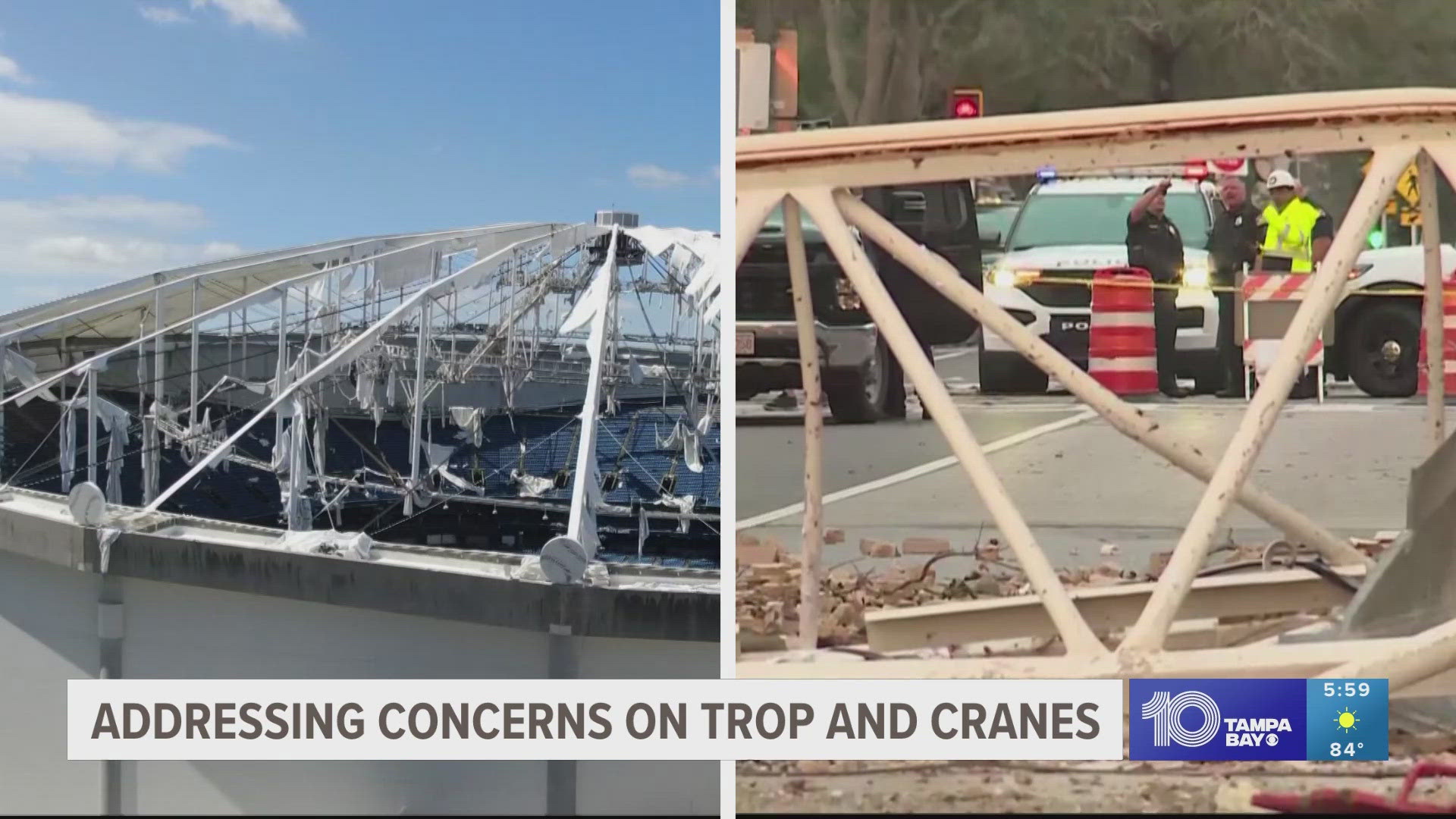The December, 7th 1941 Japanese raid on Pearl Harbor was one of the great defining moments in history.
A single carefully-planned and well-executed stroke removed the United States Navy's battleship force as a possible threat to the Japanese Empire's southward expansion. America, unprepared and now considerably weakened, was abruptly brought into the Second World War as a full combatant.
Eighteen months earlier, President Franklin D. Roosevelt had transferred the United States Fleet to Pearl Harbor as a presumed deterrent to Japanese aggression. The Japanese military, deeply engaged in the seemingly endless war it had started against China in mid-1937, badly needed oil and other raw materials.
Commercial access to these was gradually curtailed as the conquests continued. In July 1941 the Western powers effectively halted trade with Japan. From then on, as the desperate Japanese schemed to seize the oil and mineral-rich East Indies and Southeast Asia, a Pacific war was virtually inevitable.
By late November 1941, with peace negotiations clearly approaching an end, informed U.S. officials (and they were well-informed, they believed, through an ability to read Japan's diplomatic codes) fully expected a Japanese attack into the Indies, Malaya and probably the Philippines. Completely unanticipated was the prospect that Japan would attack east, as well.
The U.S. Fleet's Pearl Harbor base was reachable by an aircraft carrier force, and the Japanese Navy secretly sent one across the Pacific with greater aerial striking power than had ever been seen on the World's oceans. Its planes hit just before 8 a.m. on December 7.
Within a short time five of eight battleships at Pearl Harbor were sunk or sinking, with the rest damaged. Several other ships and most Hawaii-based combat planes were also knocked out and over 2400 Americans were dead. Soon after, Japanese planes eliminated much of the American air force in the Philippines, and a Japanese Army was ashore in Malaya.
Photos: The attack on Pearl Harbor
These great Japanese successes, achieved without prior diplomatic formalities, shocked and enraged the previously divided American people into a level of purposeful unity hardly seen before or since. For the next five months, until the Battle of the Coral Sea in early May, Japan's far-reaching offensives proceeded untroubled by fruitful opposition. American and Allied morale suffered accordingly. Under normal political circumstances, an accommodation might have been considered.
The Japanese Force

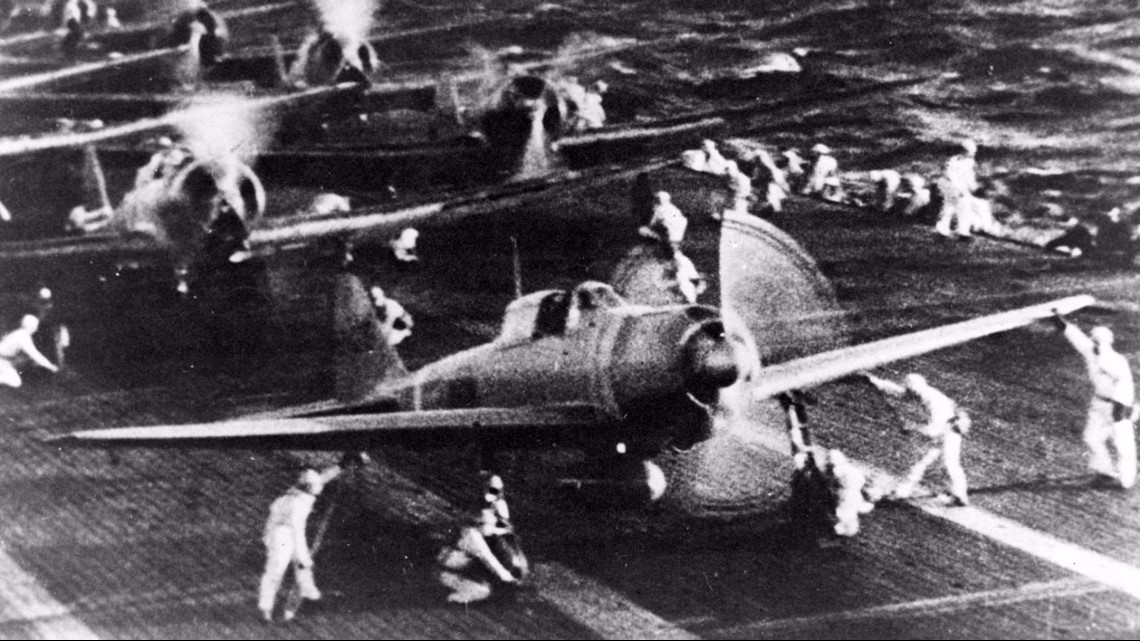
The Pearl Harbor naval base was recognized by both the Japanese and the United States Navies as a potential target for hostile carrier air power. The U.S. Navy had even explored the issue during some of its interwar "Fleet Problems".
However, its distance from Japan and shallow harbor, the certainty that Japan's navy would have many other pressing needs for its aircraft carriers in the event of war, and a belief that intelligence would provide warning persuaded senior U.S. officers that the prospect of an attack on Pearl Harbor could be safely discounted.
During the interwar period, the Japanese had reached similar conclusions. However, their pressing need for secure flanks during the planned offensive into Southeast Asia and the East Indies spurred the dynamic commander of the Japanese Combined Fleet, Admiral Isoroku Yamamoto to revisit the issue.
His staff found that the assault was feasible, given the greater capabilities of newer aircraft types, modifications to aerial torpedoes, a high level of communications security and a reasonable level of good luck. Japan's feelings of desperation helped Yamamoto persuade the Naval high command and Government to undertake the venture should war become inevitable, as appeared increasingly likely during October and November 1941.
All six of Japan's first-line aircraft carriers, Akagi, Kaga, Soryu, Hiryu, Shokaku and Zuikaku, were assigned to the mission. With over 420 embarked planes, these ships constituted by far the most powerful carrier task force ever assembled. Vice Admiral Chuichi Nagumo, an experienced, cautious officer, would command the operation.
His Pearl Harbor Striking Force also included fast battleships, cruisers and destroyers, with tankers to fuel the ships during their passage across the Pacific. An Advance Expeditionary Force of large submarines, five of them carrying midget submarines, was sent to scout around Hawaii, dispatch the midgets into Pearl Harbor to attack ships there, and torpedo American warships that might escape to sea.
Under the greatest secrecy, Nagumo took his ships to sea on 26 November 1941, with orders to abort the mission if he was discovered, or should diplomacy work an unanticipated miracle. Before dawn on the 7th of December, undiscovered and with diplomatic prospects firmly at an end, the Pearl Harbor Striking Force was less than three-hundred miles north of Pearl Harbor.
Photos: Japanese Forces in the Pearl Harbor Attack
A first attack wave of over 180 aircraft, including torpedo planes, high-level bombers, dive bombers and fighters, was launched in the darkness and flew off to the south. When first group had taken off, a second attack wave of similar size, but with more dive bombers and no torpedo planes, was brought up from the carriers' hangar decks and sent off into the emerging morning light.
Near Oahu's southern shore, the five midget submarines had already cast loose from their "mother" subs and were trying to make their way into Pearl Harbor's narrow entrance channel.


The Japanese Navy included five Type A midget submarines in the Pearl Harbor raid of 7 December 1941. Transported on board large I type submarines, the midgets were launched near the entrance to Pearl Harbor the night before the attack was to begin.
One, spotted trying to enter the harbor before dawn, was attacked and sunk by USS Ward (DD-139) in the first combat action of the as yet unopened Pacific War. At least one of the midgets was able to enter the harbor and was sunk there by USS Monaghan (DD-354). Another, the Ha-19, unsuccessful in its attempts to penetrate Pearl Harbor, drifted around to the east coast of Oahu and was captured there the day after the attack.
PHOTOS: Japanese Midget Submarines
Photos: Japanese Midget Submarines
Four of the five Pearl Harbor midget submarines have been found. That sunk by Ward was located by the Hawai'i Undersea Research Laboratory in late August 2002 in deep water, some five miles off the entrance to Pearl Harbor. It remains where it sank as an element of the Pearl Harbor National Historic Landmark.
The other three have been salvaged. Ha-19 was recovered immediately after the attack and the one sunk by USS Monaghan a few days later. The third was found off the harbor entrance in 1960. The submarine sunk by USS Monaghan's submarine was buried in a landfill shortly after its recovery. Two are on exhibit, Ha-19 at Fredericksburg, Texas, and the one found in 1960 at Eta Jima, Japan.
One of the five Pearl Harbor midgets is still unaccounted for. Recent studies of Pearl Harbor attack photography have led some observers to argue that one of the midgets was in place off "Battleship Row" as the Japanese torpedo planes came in, and may have fired its torpedoes at USS Oklahoma (BB-37) or USS West Virginia (BB-48). This contention is still controversial, but, if it is true, the "missing" Type A midget submarine may lie undiscovered inside Pearl Harbor.
The story of Battleship Row during the attack

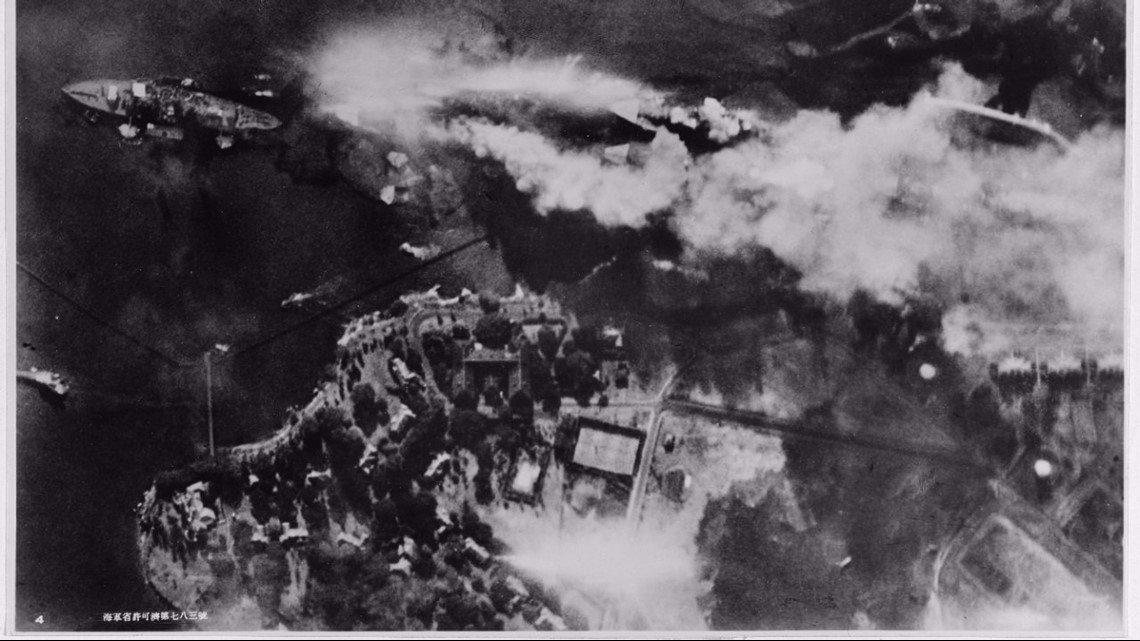
Before dawn on 7 December 1941, the American strategic center of gravity in the Pacific reposed in the seven battleships then moored along "Battleship Row", the six pairs of interrupted quays located along Ford Island's eastern side.
Quay F-2, the southernmost, which usually hosted an aircraft carrier, was empty. Northeastward, Battle Force flagship California was next, moored at F-3. Then came two pairs, moored side by side: Maryland with Oklahoma outboard, and Tennessee with West Virginia outboard.
These great Japanese successes, achieved without prior diplomatic formalities, shocked and enraged the previously divided American people into a level of purposeful unity hardly seen before or since. For the next five months, until the Battle of the Coral Sea in early May, Japan's far-reaching offensives proceeded untroubled by fruitful opposition. American and Allied morale suffered accordingly. Under normal political circumstances, an accommodation might have been considered.
PHOTOS: Images of "Battleship Row"
Photos: Battleship Row
However, the memory of the "sneak attack" on Pearl Harbor fueled a determination to fight on. Once the Battle of Midway in early June 1942 had eliminated much of Japan's striking power, that same memory stoked a relentless war to reverse her conquests and remove her, and her German and Italian allies, as future threats to World peace.
These great Japanese successes, achieved without prior diplomatic formalities, shocked and enraged the previously divided American people into a level of purposeful unity hardly seen before or since.
For the next five months, until the Battle of the Coral Sea in early May, Japan's far-reaching offensives proceeded untroubled by fruitful opposition. American and Allied morale suffered accordingly. Under normal political circumstances, an accommodation might have been considered.
However, the memory of the "sneak attack" on Pearl Harbor fueled a determination to fight on. Once the Battle of Midway in early June 1942 had eliminated much of Japan's striking power, that same memory stoked a relentless war to reverse her conquests and remove her, and her German and Italian allies, as future threats to World peace.


